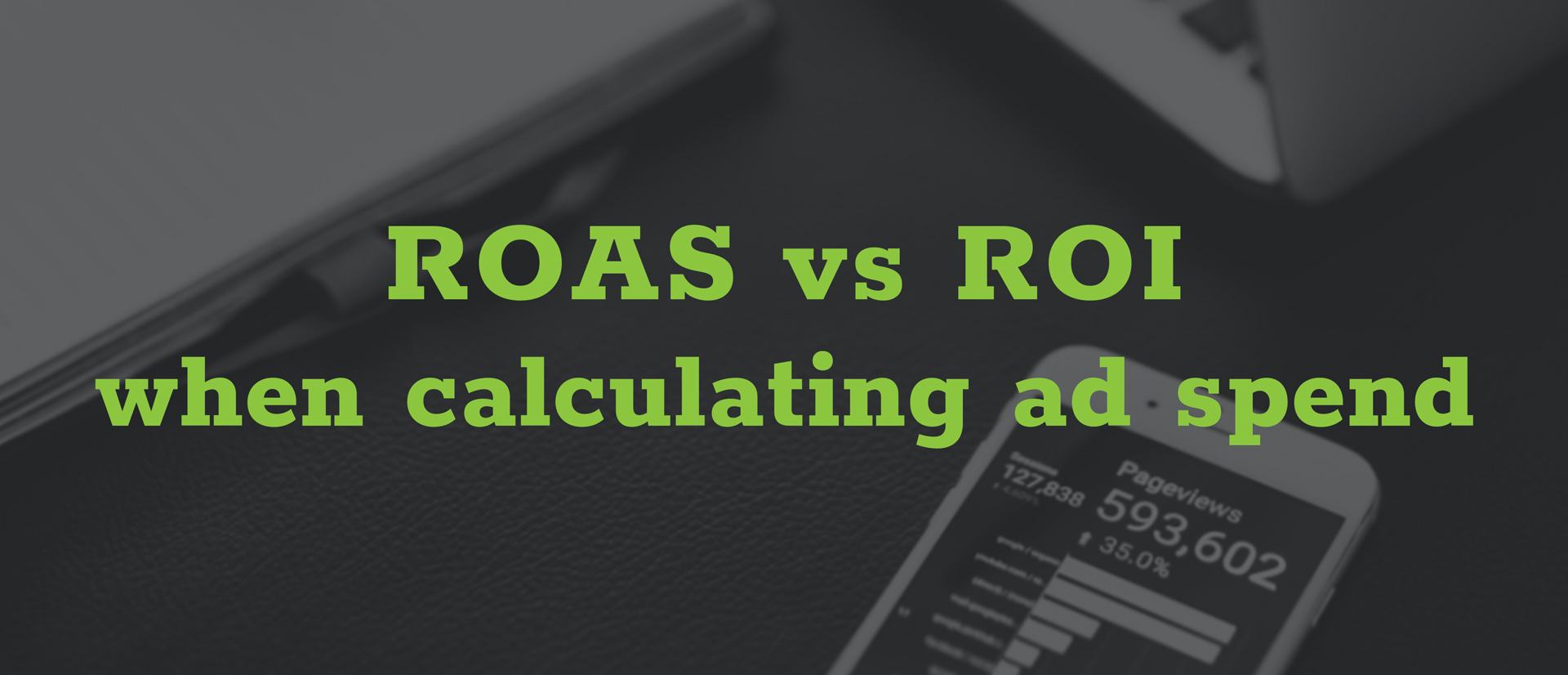
ROAS vs ROI: What Measurement is Best for Ads?
As it relates to measuring how your advertising is doing, one may think that return on ad spend (ROAS) is the same as return on investment (ROI). However, these two ways of calculating your return from your advertising costs yield different results. Consequently, it is important to understand these two methods in order to effectively manage the profitability of your ad campaigns. ROAS is typically employed as a measuring stick with digital ads while ROI has historically been used for traditional outbound ads like radio, T.V., or even print. But just going with ROAS can leave you blind-sided.
ROAS in Advertising
The most common method for assessing the profitability of digital marketing in our modern era of online ads is ROAS. It is the preferred method for several reasons and we will discuss when to use ROAS and when to use ROI in this article. ROAS provides us with the average return on the total advertising spend.
Calculating ROAS

Calculating the return from ads
The formula for calculating ROAS if fairly simple: Revenue / Cost = ROAS
CHAMELEON’S ROAS EXAMPLE
A simple way our company may calculate ROAS would be to look at video production sales. Let’s say we ran a Facebook ad campaign spending $3,500 over a period of a month. From those ads we generate $12,000 in sales. Plugging it into the above formula you have $12,000 / $3,500 = 3.43 ROAS. This results in a $3.43 profit for every dollar spent on Facebook ads.
MANUFACTURER’S ROAS EXAMPLE
Let us take a scenario where you are a manufacturer of membrane switches that are sold on your e-commerce site. Assume you embark on a Google Ads campaign over several months. You spend $2,500 per month on ads and sell $15,000 in membrane switches. Your ROAS is $15,000 / $2,500 = 6 indicating you profit $6 on every $1 of Google Ads spend.
ROI in Advertising
Now let’s take a look ROI. Essentially ROI takes into account your profit margins by considering total expenses while ROAS just looks at ad costs. So ROI is giving you all of the information on just whether your campaign was worth even doing. If your agency or digital marketing consultant is not considering ROI, beware. What it boils down to is profit margin. To calculate ROI we use the following formula:
(Value of Investment – Cost of Investment) / Cost of Investment – or – (((Revenue – Cost)/Cost) X 100
For instance, let’s take the two examples we gave earlier and apply them to ROI:
CHAMELEON’S ROI EXAMPLE
Take our Facebook ad campaign that spent $3,500 over a period of a month generating $12,000 in sales. But let’s say our profit margin is .30 because we pay our director of photography, editor, and production assistant out of the $12,000 in video sales leaving us with a 30% profit margin. You now have an ROI calculation of ((($12,000 X 0.3) – $3,500) / $3,500) X 100 = $2.85. You realize your $3.43 profit from every dollar on Facebook truly yields a $2.85 ROI on your ad spend.
MANUFACTURER’S ROI EXAMPLE
In our membrane switch manufacturing example let’s assume a profit margin of 10%. The following is our ROI calculation:
((($15,000 X 0.1) – $2500) / $2500) X 100 = -40%
Considering a slimmer margin for manufacturing, it is evident this ad investment was not a profitable as initially thought.
Let us know if we can help to get you ROI on your digital advertising. Remember, it is all in how you slice the numbers!




